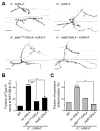MAPK3 at the Autism-Linked Human 16p11.2 Locus Influences Precise Synaptic Target Selection at Drosophila Larval Neuromuscular Junctions
- PMID: 28196412
- PMCID: PMC5339506
- DOI: 10.14348/molcells.2017.2307
MAPK3 at the Autism-Linked Human 16p11.2 Locus Influences Precise Synaptic Target Selection at Drosophila Larval Neuromuscular Junctions
Abstract
Proper synaptic function in neural circuits requires precise pairings between correct pre- and post-synaptic partners. Errors in this process may underlie development of neuropsychiatric disorders, such as autism spectrum disorder (ASD). Development of ASD can be influenced by genetic factors, including copy number variations (CNVs). In this study, we focused on a CNV occurring at the 16p11.2 locus in the human genome and investigated potential defects in synaptic connectivity caused by reduced activities of genes located in this region at Drosophila larval neuromuscular junctions, a well-established model synapse with stereotypic synaptic structures. A mutation of rolled, a Drosophila homolog of human mitogen-activated protein kinase 3 (MAPK3) at the 16p11.2 locus, caused ectopic innervation of axonal branches and their abnormal defasciculation. The specificity of these phenotypes was confirmed by expression of wild-type rolled in the mutant background. Albeit to a lesser extent, we also observed ectopic innervation patterns in mutants defective in Cdk2, Gαq, and Gp93, all of which were expected to interact with Rolled MAPK3. A further genetic analysis in double heterozygous combinations revealed a synergistic interaction between rolled and Gp93. In addition, results from RT-qPCR analyses indicated consistently reduced rolled mRNA levels in Cdk2, Gαq, and Gp93 mutants. Taken together, these data suggest a central role of MAPK3 in regulating the precise targeting of presynaptic axons to proper postsynaptic targets, a critical step that may be altered significantly in ASD.
Keywords: 16p11.2; Drosophila; MAPK3; autism; copy number variations.
Figures





Similar articles
-
Drosophila Homolog of Human KIF22 at the Autism-Linked 16p11.2 Loci Influences Synaptic Connectivity at Larval Neuromuscular Junctions.Exp Neurobiol. 2016 Feb;25(1):33-9. doi: 10.5607/en.2016.25.1.33. Epub 2016 Feb 22. Exp Neurobiol. 2016. PMID: 26924931 Free PMC article.
-
Reversal of dendritic phenotypes in 16p11.2 microduplication mouse model neurons by pharmacological targeting of a network hub.Proc Natl Acad Sci U S A. 2016 Jul 26;113(30):8520-5. doi: 10.1073/pnas.1607014113. Epub 2016 Jul 11. Proc Natl Acad Sci U S A. 2016. PMID: 27402753 Free PMC article.
-
The Immune Signaling Adaptor LAT Contributes to the Neuroanatomical Phenotype of 16p11.2 BP2-BP3 CNVs.Am J Hum Genet. 2017 Oct 5;101(4):564-577. doi: 10.1016/j.ajhg.2017.08.016. Epub 2017 Sep 28. Am J Hum Genet. 2017. PMID: 28965845 Free PMC article.
-
The genetics of autism.Pediatrics. 2004 May;113(5):e472-86. doi: 10.1542/peds.113.5.e472. Pediatrics. 2004. PMID: 15121991 Review.
-
Detection and characterization of copy number variation in autism spectrum disorder.Methods Mol Biol. 2012;838:115-35. doi: 10.1007/978-1-61779-507-7_5. Methods Mol Biol. 2012. PMID: 22228009 Review.
Cited by
-
Genetics of glutamate and its receptors in autism spectrum disorder.Mol Psychiatry. 2022 May;27(5):2380-2392. doi: 10.1038/s41380-022-01506-w. Epub 2022 Mar 16. Mol Psychiatry. 2022. PMID: 35296811 Free PMC article. Review.
-
Independent Associated SNPs at SORCS3 and Its Protein Interactors for Multiple Brain-Related Disorders and Traits.Genes (Basel). 2023 Feb 14;14(2):482. doi: 10.3390/genes14020482. Genes (Basel). 2023. PMID: 36833409 Free PMC article.
-
Identification of De Novo JAK2 and MAPK7 Mutations Related to Autism Spectrum Disorder Using Whole-Exome Sequencing in a Chinese Child and Adolescent Trio-Based Sample.J Mol Neurosci. 2020 Feb;70(2):219-229. doi: 10.1007/s12031-019-01456-z. Epub 2019 Dec 14. J Mol Neurosci. 2020. PMID: 31838722 Free PMC article.
-
The Green Valley of Drosophila melanogaster Constitutive Heterochromatin: Protein-Coding Genes Involved in Cell Division Control.Cells. 2022 Sep 29;11(19):3058. doi: 10.3390/cells11193058. Cells. 2022. PMID: 36231024 Free PMC article. Review.
-
The pleiotropic spectrum of proximal 16p11.2 CNVs.Am J Hum Genet. 2024 Nov 7;111(11):2309-2346. doi: 10.1016/j.ajhg.2024.08.015. Epub 2024 Sep 26. Am J Hum Genet. 2024. PMID: 39332410 Free PMC article. Review.
References
-
- Amaral D.G., Schumann C.M., Nordahl C.W. Neuroanatomy of autism. Trends Neurosci. 2008;31:137–145. - PubMed
-
- Arnold S.E. Neurodevelopmental abnormalities in schizophrenia: insights from neuropathology. Dev Psychopathol. 1999;11:439–456. - PubMed
-
- Atwood H., Govind C., Wu C.F. Differential ultrastructure of synaptic terminals on ventral longitudinal abdominal muscles in Drosophila larvae. J Neurobiol. 1993;24:1008–1024. - PubMed
MeSH terms
Substances
LinkOut - more resources
Full Text Sources
Other Literature Sources
Molecular Biology Databases
Miscellaneous

